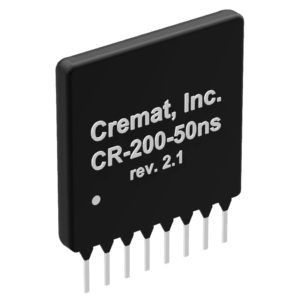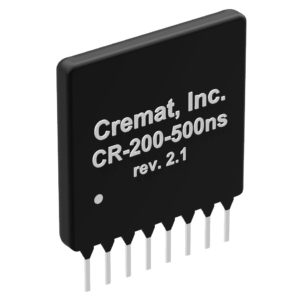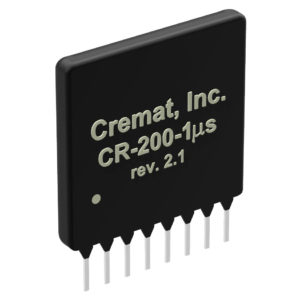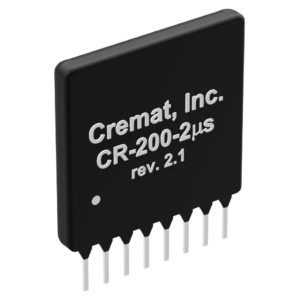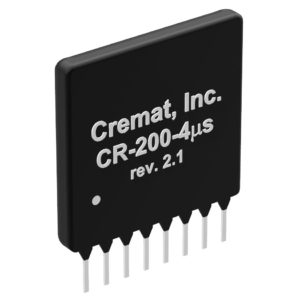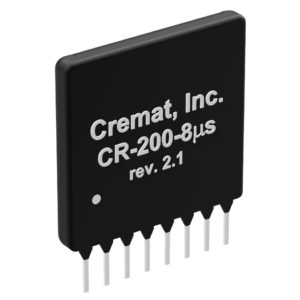Shaping amplifiers are often used following the charge sensitive preamplifier stage and perform three functions: First, they provide an output pulse having a much faster return to the baseline than the charge sensitive preamplifier output pulse. This is especially important at high count rates, where pulses from consecutive events can ‘pile up’. Secondly, shaping amplifiers filter noise from the preamplifier output signal. Finally, shaping amplifiers can also be used to provide extra gain to the signal, which may be very small (sub mV) at the preamplifier output.
In the example below, two oscilloscope traces are shown: the input (blue) and output (yellow) of a shaping amplifier (1μs shaping time) reading pulses from a charge sensitive preamplifier in the presence of noise. Not only does the shaping amplifier amplify the small pulses, but more importantly the fall time is quickened, greatly reducing the problem of pulses ‘piling up’ on the tails of preceding pulses. Also, the filtering effects of the shaping amplifier significantly filters the noise. This allows for pulses to be clearly detected that would be otherwise completely buried within the noise.

Cremat offers the CR-200 series of shaping amplifiers. They are available in eight different shaping times: 50ns, 100ns, 250ns, 500ns, 1μs, 2μs, 4μs, and 8μs. Each has a fixed gain. To achieve greater gains, a broadband amplification stage should be added between the charge sensitive preamplifier and the shaping amplifier. Cremat offers an evaluation board for the CR-200-X series amplifiers (CR-160-R9), which contains such a broadband amplifier. The combination of a CR-200-X series amplifier with the CR-160-R9 evaluation board creates a low noise shaping amplifier module complete with BNC connectors, variable gain and reversible polarity.
For pulse detection requiring medium to high counting rates or high resolution we recommend also using the CR-210 baseline restoration module.
